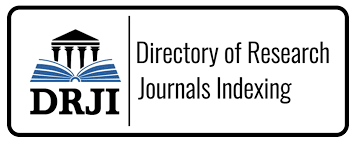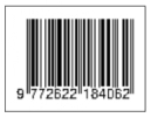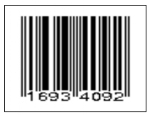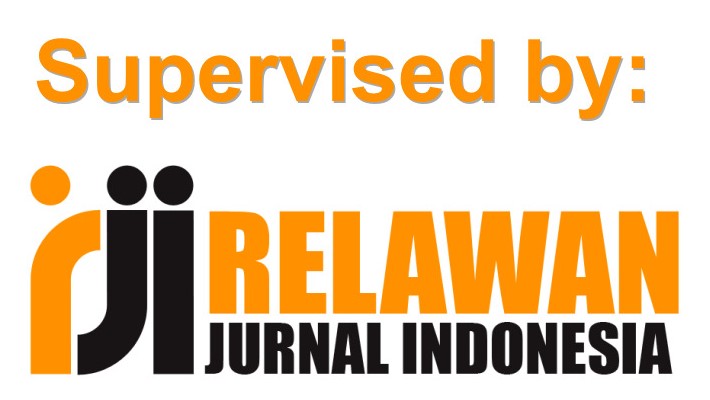Transformasi Penjualan Produk Melalui Strategi Pemasaran Berbasis SWOT Pada UMKM Ayulala Bakery Kota Palu
DOI:
https://doi.org/10.31851/jmwe.v22i1.17527Abstract
ABSTRAK
Penelitian ini bertujuan untuk mengeksplorasi penerapan strategi pemasaran berdasarkan analisis SWOT untuk mentransformasikan penjualan produk di Ayulala Bakery secara signifikan dan mempertahankan eksistensinya di tengah persaingan yang semakin ketat. Penelitian ini menggunakan pendekatan deskriptif kualitatif dengan menggunakan observasi, wawancara, dan dokumentasi untuk pengumpulan data. Wawancara dilakukan langsung dengan pemilik Ayulala Bakery sebagai sumber informasi utama. Hasil penelitian menunjukkan bahwa Ayulala Bakery berada pada posisi Kuadran II analisis SWOT, dengan kekuatan internal yang relatif tinggi namun ancaman eksternal yang signifikan. Disarankan agar Ayulala Bakery melakukan strategi diversifikasi untuk memperluas pangsa pasar dengan memanfaatkan peluang seperti pengembangan produk, memperluas saluran pemasaran melalui platform digital, penghematan bahan baku untuk mengatasi inflasi, dan memperkenalkan produk yang berorientasi pada tren konsumen. Strategi-strategi tersebut diharapkan dapat mendorong transformasi penjualan produk dan mempertahankan posisi pasar yang kompetitif.
Kata Kunci: Strategi Pemasaran, Analisis SWOT,UMKM.
ABSTRACT
This study aims to explore the implementation of a marketing strategy based on SWOT analysis to significantly transform product sales at Ayulala Bakery and maintain its existence amidst increasing competition. The research employs a descriptive qualitative approach, utilizing observation, interviews, and documentation for data collection. Interviews were conducted directly with the owner of Ayulala Bakery as the primary source of information. The results indicate that Ayulala Bakery is positioned in Quadrant II of the SWOT analysis, with relatively high internal strengths but significant external threats. It is recommended that Ayulala Bakery adopt a diversification strategy to expand market share by leveraging opportunities such as product development, expanding marketing channels through digital platforms, saving raw materials to address inflation, and introducing consumer trend-oriented products. These strategies are expected to drive product sales transformation and maintain competitive market positioning.
Keywords : Marketing Strategy, SWOT Analysis, MSEMs.
References
Adam, R. P., Fattah, V., Amirudin, M., Dwiyanto, D., & Farid, E. S. (2023). Production and Marketing Strategies: Reduce Dependence on The Ijon System and Increase Soybean Farmer’s Income. Jurnal Manajemen Dan Agribisnis, 20(3), 378–392. https://doi.org/10.17358/jma.20.3.378
Adam, R. P., Suardi, & Lahay, M. (2023). Pricing strategy and marketing distribution channels on customer satisfaction and purchasing decision for green products. Uncertain Supply Chain Management, 11(4), 1467–1476. https://doi.org/10.5267/j.uscm.2023.7.022
Adda, H. W., Buntuang, P. C. D., & Ardianto, H. (2022). Promoting Transformative Learning Through Independent-Study Campus (MBKM) in Higher Institutions During the COVID-19 Pandemic. AL-ISHLAH: Jurnal Pendidikan, 14(3), 2701–2710. https://doi.org/10.35445/alishlah.v14i3.1867
Ari Arham Palaguna, Suryadi Samudra, & Adfiyani Fadjar. (2023). Strategi Pengembangan Dan Inovasi Bisnis UD. Barokah Berbasis Sumber Daya Manusia. Jurnal of Management and Social Sciences, 1(3), 54–64. https://doi.org/10.59031/jmsc.v1i3.154
Artanti, A. N., Prihapsara, F., Suryani, E., Rahmatul Kholiq, M. H., Astirin, O. P., & Rahayu, E. S. (2022). Transformasi Penjualan Digital Produk Jamu dan Obat Tradisional pada UKM Jamu di Kabupaten Sukoharjo. Aksiologiya: Jurnal Pengabdian Kepada Masyarakat, 7(1). https://doi.org/10.30651/aks.v7i1.9033
Asngadi. (2011). study exploratory atas faktor penentu konsumen berkunjung di Mall Tatura Palu Sulawesi Tengah. Study Exploratory, 9(1693–5241), 9.
Bachri, S., Monoarfa, H., & Santi, I. N. (2015). Kerajinan Kayu Ebony di Sulawesi Tengah. 66, 299–303.
Bachri, S., Putra, S. M., Farid, E. S., Darman, D., & Mayapada, A. G. (2023). the Digital Marketing To Influence Customer Satisfaction Mediated By Purchase Decision. Jurnal Aplikasi Manajemen, 21(3), 578–592. https://doi.org/10.21776/ub.jam.2023.021.03.03
Devi Nurfatimah, Asngadi Asngadi, Sulaeman Miru, & Syamsuddin Syamsuddin. (2024). Pengendalian Proses Produksi Untuk Meningkatkan Kualitas Produk Pada Usaha Out Of The Box Di Kota Palu. Jurnal Ekonomi Dan Pembangunan Indonesia, 2(1), 200–206. https://doi.org/10.61132/jepi.v2i1.363
Fadjar, A., Hartini, S., & Astuti, S. W. (2022). Instagram Usage Behavior: Does It Aim to Look More Attractive? Quality - Access to Success, 23(190), 226–232. https://doi.org/10.47750/qas/23.190.24
Farid, E. S. (2023). Strategi produksi dan pemasaran: mengurangi ketergantungan pada sistem ijon dan meningkatkan pendapatan petani kedelai. 20(3), 378–392.
Ibrahim, A. I., Setiawan, M., Noermijati, & Rahayu, M. (2024). Hr Innovation in Mediating Entrepreneurial Motivation in Improving the Competitive Ability of Palu Fried Onions Msmes. Business, Management and Economics Engineering, 22(1), 77–95. https://doi.org/10.3846/bmee.2024.19933
Karim, A., Setyowati, T., & Hermawan, H. (2022). Strategi Pemasaran Berbasis Analisis Swot Sebagai Upaya Mening-katkan Pendapatan Pada Badan Usaha Milik Desa Karya Mandiri Desa Balung Kulon Kabupaten Jember. National Multidisciplinary Sciences, 1(3), 234–335. https://doi.org/10.32528/nms.v1i3.81
Kotler, P .,Armstrong, G.(2020). Principle of Marketing. Pearson Edeucation.18.9780136708582.
https://book.google.co.id/books?id=i4pFzwEACAAJ
Sintya Puspita Sari, Sulaeman Miru, Asngadi Asngadi, & Wiri Wirastuti. (2024). Analisis Value Added Olahan Cokelat Batangan Pada CV. Rapoviaka Simple Di Kota Palu. Jurnal Ekonomi Dan Pembangunan Indonesia, 2(1), 215–222. https://doi.org/10.61132/jepi.v2i1.366
Sutomo, M., Wahyuningsih, Muslimin, Mangun, N., Rombe, E., & Fattah, vitayanti. (2024). Optimization of Pentahelix Collaboration in Tourism Development Management:Effective Strategies to Overcome Poverty. Jurnal Konsep Bisnis Dan Manajemen, 10(2), 237–250. https://doi.org/10.31289/jkbm.v10i2.11850
Sya, I. S. (2023). U Mkm Development Strategy Through the Develop M Ent Poli Cy of the Cooperati on Depart Ment of Si G I Str I Ct , Central Sula W. 5, 73–83.
Tjiptono, F., & Diana, A. (2020). PEMASARAN (Fandy Tjiptono (ed.).
Wahyuningsih, A., & Nurdin, D. (2010). The Effect of Costumer Satisfaction on Behavioral Intntions. Jurnal Manajemen Bisnis, 3(1), 1–16.
Wahyuningsih, Hanny Nasution, Ratna Roostika, & Yulia Hendri Yeni. (2022). An Examination Of Customer Satisfaction Toward Online Food Shopping During Covid-19 Pandemic. An Examination Of Customer Satisfaction Toward Online Food Shopping During Covid-19 Pandemic, 20(2), 231–241. File:///C:/Users/Asus/Downloads/2769-7290-1-Pb.Pdf
Wahyuningsih, W. (2005). The Relationships among Customer Value, Satisfaction and Behavioral Intentions: A General Structural Equation Model. Gadjah Mada International Journal of Business, 7(3), 301. https://doi.org/10.22146/gamaijb.5584
Wahyuningsih, W. (2013). Customer Value, Satisfaction and Behavioral Intentions: the Effects of Consumer Search Behavior. ASEAN Marketing Journal, 3(1). https://doi.org/10.21002/amj.v3i1.2011
Zahara, Z., Ikhsan, Santi, I. N., & Farid. (2023). Entrepreneurial marketing and marketing performance through digital marketing capabilities of SMEs in post-pandemic recovery. Cogent Business and Management, 10(2). https://doi.org/10.1080/23311975.2023.2204592
Zahara, Z., Muslimin, M., & Buntuang, P. C. D. (2022). The impact of marketing innovations and business plans on business sustainability during the COVID-19 pandemic. Innovative Marketing, 18(3), 121–135. https://doi.org/10.21511/im.18(3).2022.11
Downloads
Published
Issue
Section
License
Copyright (c) 2025 Jurnal Media Wahana Ekonomika

This work is licensed under a Creative Commons Attribution-NonCommercial 4.0 International License.
The copyright of the received article shall be assigned to the publisher of the journal licensed under a Creative Commons Attribution-NonCommercial 4.0 International License in line with the license, authors and any users (readers and other researchers) are allowed to share and adapt the material only for non-commercial purposes. In addition, the material must be given appropriate credit, provided with a link to the license, and indicated if changes were made. If authors remix, transform or build upon the material, authors must distribute their contributions under the same license as the original.






















